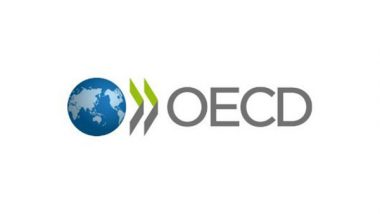Paris [France], May 6 (ANI/WAM): Year-on-year inflation in the OECD, as measured by the Consumer Price Index (CPI), fell to 7.7 per cent in March 2023, down from 8.8 per cent in February 2023 and from 10.7 per cent peak in October 2022.
Returning to its February 2022 level, the decline in inflation was broad-based, with inflation between February and March 2023 moderating in 34 of the 38 Organisation for Economic Co-operation and Development (OECD) countries.
Also Read | UK: Indian-Origin Retired Man Charged With Killing His 77-Year-Old Wife in London.
At the low end, Japan, Luxembourg, Spain and Switzerland recorded inflation rates below 4 per cent, while inflation in Hungary and Turkey still exceeded 20 per cent.
Energy inflation in the OECD dropped sharply to 1.3 per cent in March 2023, down from 11.9 per cent in February. This fall largely reflects the strong increase in the consumer price index for energy in March 2022 (i.e. base effect).
Energy inflation declined in 36 of the 38 OECD countries and was even negative in 13 countries in year-on-year terms. However, this story was not universal, with energy inflation remaining above 20 per cent in six countries.
Meanwhile, food inflation in the OECD tapered for the fourth consecutive month, down to 14.0 per cent from 14.9 per cent in February. OECD inflation less food and energy remained broadly stable at 7.2 per cent.
Year-on-year inflation in the G7 slowed further to 5.4 per cent in March 2023, down from 6.4 per cent in February, with a broad-based decline across all seven countries. Italy recorded the most significant drop, reflecting a sharp decrease in energy inflation.
In Canada, Japan and the United States, negative contributions from energy prices helped to tame headline inflation.
Food and energy inflation remained the main contributors to headline inflation in Italy, while inflation excluding food and energy served as the main driver in Canada, Germany, the United Kingdom and the United States. In France and Japan, both components contributed almost equally to headline inflation.
In the euro area, year-on-year inflation, as measured by the Harmonised Index of Consumer Prices (HICP), fell to 6.9 per cent in March 2023, from 8.5 per cent in February.
Energy prices declined by 0.9 percentage point in March. Food inflation and inflation less food less energy increased slightly.
Eurostat's flash estimate for April 2023 points to a slight increase in year-on-year inflation in the euro area, to 7.0 per cent, as the estimated rise in energy inflation was partially compensated by a slight decline in inflation less food and energy.
In the G20, year-on-year inflation fell to 6.9 per cent in March 2023, from 8.0 per cent in February. Outside the OECD, inflation decreased in Brazil, China, India, Indonesia and Saudi Arabia, but increased in Argentina. It was broadly stable in South Africa. (ANI/WAM)
(This is an unedited and auto-generated story from Syndicated News feed, LatestLY Staff may not have modified or edited the content body)













 Quickly
Quickly
















